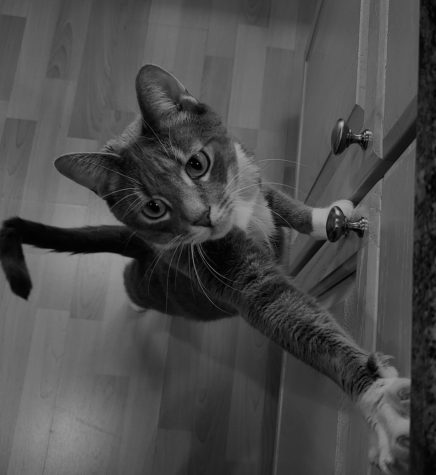With Dune: Part Two finally released, the plot for Frank Herbert’s renowned 1965 novel is now complete. Both parts, nearly reaching three hours in length each, tell the story of Paul Atreides and how he became known as the Lisan al-Gaib – the One from the Outer World – and the prophesied savior of the native Fremen of the desert planet Arakkis.
Now, one must wonder how accurate the films, directed by Denis Villeneuve, are to the novel, which range anywhere from 400 to 600 pages depending on the binding, with a level of world-build that can only be compared to The Lord of the Rings. Well, below is just that— some, but definitely not all, differences and discrepancies between the films and the original novel.
*Disclaimer: There are many spoilers ahead for the second film, so proceed with caution.
Jessica Is Believed to Be the Traitor
Lady Jessica, mother to Paul and concubine to Duke Leto Atreides, is a Bene Gesserit. Bene Gesserit are women who make up a powerful order known to have grand ulterior motives, both political and mystical. Therefore, it makes sense why suspicion would be bestowed upon her. Thufir Hawat, the Atreides’ Mentat (essentially a human computer), Duke Leto himself, and others begin to speculate that the only reason Jessica is concubine to the Duke is to fulfill these motives— which isn’t entirely incorrect. In reality, this isn’t true. The real traitor of House Atreides is the trusted Doctor Wellington Yueh.
Not only this, but we are aware that Doctor Yueh is the traitor from the start. We are given his inner thoughts as he navigates his duties and prepares for his eventual treachery. The reason Yueh is not suspected is because he has Imperial Conditioning, which is believed to be unbreakable. However, Baron Vladimir Harkonnen knows that there is a way to break it— through his wife, Wanna, who has been kidnapped, enslaved, and continues to be tortured. Yueh agreed to betray the Atredies in return for his wife’s liberation. No one but the Baron and a few close confidants are aware of this, so Yueh easily is cleared from suspicion by the Atreides.

Liet-Kynes
Doctor Kynes – known as Liet Kynes from the start in the first film – the Imperial ecologist, plays a somewhat small, yet significant role in the novel. But what’s different? Firstly, he is male; secondly, we only know him as Doctor Kynes for a majority of his time in the story. There are vague and mystical words and stories about a figure known as Liet, who hopes to turn Arrakis into a paradise— to free the waters trapped deep beneath the sands and terraform the surface. Besides the Fremen’s messianic figure, the Lisan al-Gaib, this Liet has given them hope that this dream can become a reality. As time progresses, and Paul’s Sight and awareness awakens, he eventually realizes that Liet and Doctor Kynes are one— Liet is Doctor Kynes’ Fremen name, now making him Liet-Kynes.
Jamis’ Wife and Children
In both the first film and novel Paul bests the Fremen Jamis in battle, which results in Jamis’ death. However, in the novel Paul is later entrusted to look after Jamis’ wife, Harah, and his two sons. This is entirely omitted from either film. In the novel, Paul has either the choice to have Harah as his woman or servant. Paul then questions whether he may change his mind if he chooses her as his servant. Paul is told that he would have one year to change his mind. After that time, Harah would be a free woman, but during that year Paul has the ability to free her or claim her as his woman. Regardless, for that one year, she and Jamis’ sons are Paul’s responsibility. In the end, Paul decides to have Harah as his servant.
Thufir Hawat & the Arena Duel on Giedi Prime
Once the attack on Arrakken—the northern capital of Arrakis—took place, carried out by the hands of the Harkonnen and the Emperor’s warrior fanatics, the Sardaukar, we saw no more of the Atreides Mentat Thurfir Hawat for the rest of the first film and had not even a mention of him in the second. It would be understandable to assume that he had died.
However, in the novel, Hawat had been at Tsimpo, a garrison village that was once an outpost for the previous capital city of Carthag when the Arrakeen attack occurred. Therefore, he survived the massacre. He soon found refuge with some Fremen for a time, but then was apprehended by the Harkonnens to be used as their new Mentat since Piter de Vries died as a result of Duke Leto’s failed attempt to kill the Baron. To ensure Hawat cooperated with the Harkonnens—his mortal enemies—he was given a residual poison and an antidote. If Hawat decided to betray or trick the Harkonnens, the antidote would stop being provided, allowing the poison to kill the Mentat.
Now, that brings us to the infamous duel on Giedi Prime, the Harkonnen homeworld. In the duel, Feyd-Rautha Harkonnen—the Baron’s youngest nephew and na-Baron—is set to partake in an arena duel in celebration of his seventeenth birthday. Typically, the slaves he battles are drugged, but this time, the man is visibly stable and well-oriented (yes, he battles one man in the novel rather than three).
Another important aspect about the area duel In both the second film and the novel the na-Baron wields two blades— a long black blade representing purity and a short white blade representing poison. However, Feyd-Rautha defied the custom that day by making the black blade impure— he applied poison to this blade rather than the white for “a purely personal victory”. This change did, indeed, deliver him victory in the end as he fooled the opponent who believed the white blade was doused in poison.
At the beginning of the duel in the novel, Feyd-Rautha quickly realizes that the non-drugged opponent is one of the Atreides men the Harkonenns took from Arakkis from the hawk symbol drawn in blood on the hip of his leotards— the symbol of House Atreides. Soon, the na-Baron comes to understand that despite Hawat planning the events of the duel—the non-drugged opponent—that there was also treachery within the plan. There were plans within plans. Thufir Hawat specifically chose the Atreides man in hopes that he would best the young na-Baron. Even if he did not, it would be a warning to the Harkonnens that the Atreides would gain retribution in time.
In the second film, however, all of this is excluded. Understandably, the conclusion of Hawat’s plan-within-plan thinking all comes from the thought of Feyd-Rautha himself, so it would be considerably difficult to include these thoughts in the more visual format of a film.
Alia is Born & a Two-Year Time Skip
In the first film there is a sudden reveal that Jessica is pregnant with Paul’s sister, Alia. In the second film, Jesscia’s pregnancy develops over the several months they integrate with the Fremen, but one major thing that happens in the novel doesn’t occur in the film— Alia is born. There are still some consistencies, however.
When Jessica is tasked with becoming a Reverend Mother, she must drink the Water of Life— actually a poison that will open her mind and allow her to receive the memories and experiences of all Reverend Mothers before her. What the Fremen preparing and carrying out the ritual don’t know is that Jessica is pregnant. Once they come to this revelation it is too late— Alia has already been enveloped by the Water of Life. She, like her mother, gains the consciousness of all those before her. Now, Jessica has become a Reverend Mother of the Fremen and Alia has become pre-born.
There is also a two-year time skip over the course of the novel. Having been pre-born, Alia was bestowed with all the knowledge of her adult mother-turned Reverend Mother as well as all other Reverend Mothers before her. As such, the two-year-old girl speaks very much like a wise adult with a deep understanding of the universe that no child that young should have. Understandably, Alia’s eccentric personality tends to frighten many of the Fremen.
In the second film, however, only months have passed. One can see that Jessica is visibly more pregnant, but not enough time passed for her coming. Instead, to atone for this loss of plot, Alia can speak to Jessica even in the womb. In the film, Alia provides wisdom and advice to Jessica to secure a safe way for Paul as his mystical journey progresses.
Leto II— Paul’s Son
Seeing as Alia is not even born within the months-long time progression in the second film it wouldn’t make sense for Leto II to be born as well. Leto II? Yes— Paul’s son, begat by his wife Chani and graciously named after Paul’s late father. Although he is still an infant or toddler in the novel, he is completely excluded from the film. Adding him in realistically wouldn’t change the course of the story considering his age, but he does become a much more significant character in Herbert’s later Dune novels.
Alia Kills the Baron
In the latter stages of the second film, Paul declares war on Emperor Emperor Shaddam Corrino IV, who heeds the call and arrives on Arakkis. During the siege, once Paul and his massive army of Fremen capture the Emperor’s imperial complex, Paul kills Baron Vladimir Harkonnen in a dramatic scene. Paul, known by his Feydakin war name of Muad’Dib—referencing a small sand mouse—storms into the complex. The Emperor, his daughter, the Princess Irulan, and others of his House are pushed into a corner of the, protected by the Sardaukar. Paul, however, ignores the Emperor and marches towards the Baron lying injured on the ground from a previous interaction with the Emperor, with rage-filled conviction. Paul unveils his face and stabs the Baron in the neck, uttering the singular word, “grandfather,” finally revealing their direct lineage. (Earlier in the film, Paul discovers that Jessica, his mother, is the daughter of Harkonnen Baron).
However, in the novel, the two-year-old Alia is the one responsible for this death. During the final battle of Arakkis, the Baron seizes hold of Alia, but Alia, thinking swiftly stabs the Baron with the Gom Jabbar—a poison needle used by Bene Gesserit in a test to differentiate humans from animals. As the Baron begins to die, Alia is the one who reveals her lineage to the Baron as his granddaughter. This act earns her the infamous title of Saint Alia of the Knife.
Conclusions
These are just some of the many differences between the legendary novel and the extravagant films. Despite these changes, there is one thing for certain – regardless if it is the original novel or more recent films, Herbert’s story is as grand as ever and shall continue to fascinate and capture people for many years to come.










Alice • Mar 26, 2024 at 11:00 pm
Great article – fantastic film, I’ve seen it 3 times already!